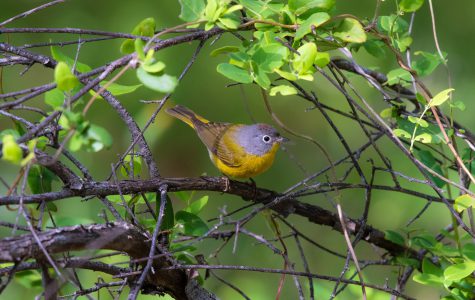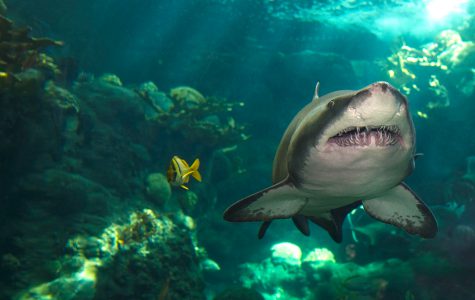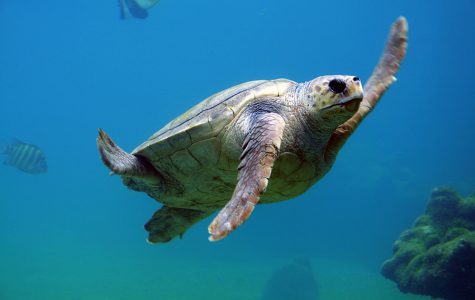Blog
Animal Migration – A Miraculous Journey
March 2, 2020
Education
 In Kenn Kaufman’s superb new book, “A Season On The Wind: Inside The World of Spring Migration,” the famed bird expert vividly describes the perilous journeys birds undertake. Consider the half-ounce blackpoll warbler. Kauffman writes, “In the space of a few weeks it trades rainforest giants along the Amazon for spindly spruces at the edge of the Arctic. On the way it flies six thousand miles navigating through heat and wind and storm, stopping over a dozen alien lands, evading countless dangers, pushing with a single-minded purpose to reach the breeding grounds.”
In Kenn Kaufman’s superb new book, “A Season On The Wind: Inside The World of Spring Migration,” the famed bird expert vividly describes the perilous journeys birds undertake. Consider the half-ounce blackpoll warbler. Kauffman writes, “In the space of a few weeks it trades rainforest giants along the Amazon for spindly spruces at the edge of the Arctic. On the way it flies six thousand miles navigating through heat and wind and storm, stopping over a dozen alien lands, evading countless dangers, pushing with a single-minded purpose to reach the breeding grounds.”
Yet other than devoted birders, Kaufman writes, few note the achievements of this tiny marvel of nature. Much the same could be said of the amazing underwater travels of fish and other sea creatures. The migrations of many species remain a mystery to scientists.
Dr. Amber Whittle, Director of Conservation for The Florida Aquarium, said, “Half of fish species migrate at some point in their lives. We have the baitfish, like anchovies, also bigger fish like tuna and some sharks.” Birds may migrate alone or in flocks and Whittle said fish are much the same. “Sand tiger sharks migrate seasonally and individually. But bull sharks have spawning aggregations in the hundreds. One is at the mouth of the Alafia River, right here in Tampa Bay.”
She’s witnessed large breeding aggregations of snapper and grouper at the Dry Tortugas. Like birds, some individual fish may remain year-round in a location, though most its species migrate. The causes of migrations are basic. “They migrate to feed, to breed, and to find nursery ground,” Whittle explained. “They can also move when it is cold and definitely when they are following food, like baitfish.”
 The prey itself likely is migrating because of changes in water temperature. Tiny baitfish, such as sardines, anchovies and menhaden, swim to the Florida Keys in the winter and work their way north to Florida’s Panhandle and beyond as waters warm.
The prey itself likely is migrating because of changes in water temperature. Tiny baitfish, such as sardines, anchovies and menhaden, swim to the Florida Keys in the winter and work their way north to Florida’s Panhandle and beyond as waters warm.
Different factors can precipitate different migrations. For instance, the bull shark swims north from the Tropics along the Atlantic Coast as the weather warms. The breeding impulse drives the aggregations that Whittle described. The bull shark also may migrate from the ocean into freshwater rivers. When it comes to migration, the white shark is a superstar. One study recorded a white shark swimming nearly 7,000 miles from South Africa to Australia and back within nine months. Other studies have found Pacific salmon species covering 6,000 miles as they migrate from small streams to the open ocean and, after several years, back to their streams of origin. They then spawn, and understandably after their marathon swim, die.
Florida coastal fish may not be renowned for such spectacular excursions, but many migrate, and some cover impressive distances. Area fishermen know they can count on the kingfish run when water temperatures drop to 68 degrees. The fish, which may migrate from as far away as Texas, pursue baitfish seeking warmer waters. Likewise, cobia seek warmer water as winter approaches traveling from the Panhandle to South Florida.The Florida Fish and Wildlife Conservation Commission reports redfish are an inshore species until they reach about 30 inches at four years old, when they migrate to the nearshore population. They then spawn in passes and inlets. Tarpon migrate north as the weather warms to about 75 degrees but are believed to swim more than 100 miles offshore to spawn during the late spring or summer before returning to coastal waters. “Believed” is a key word here because the tarpon migrations, like that of many species, still challenge researchers.
According to the Florida Fish and Wildlife Conservation Commission, “Although tarpon migrate, little is known about the frequency or extent of their travels. Scientists do know that tarpon captured in Florida have been recaptured later as far west as Louisiana and as far north as South Carolina.”
 The Bonefish and Tarpon Trust, dedicated to the conservation of these prized gamefish, stresses learning more about the spawning migration is critical because it takes place far offshore where the fish are not protected. Whittle said FWC and other scientists are trying to solve migration mysteries with underwater acoustic transmitters and receivers that monitor patterns of aquatic animals. The Integrated Track of Aquatic Animal (iTAG) in the Gulf of Mexico tags fish of different species with transmitters that not only can reveal migration routes, but also habitat preferences, stock mixing, reproduction rates and such other details.
The Bonefish and Tarpon Trust, dedicated to the conservation of these prized gamefish, stresses learning more about the spawning migration is critical because it takes place far offshore where the fish are not protected. Whittle said FWC and other scientists are trying to solve migration mysteries with underwater acoustic transmitters and receivers that monitor patterns of aquatic animals. The Integrated Track of Aquatic Animal (iTAG) in the Gulf of Mexico tags fish of different species with transmitters that not only can reveal migration routes, but also habitat preferences, stock mixing, reproduction rates and such other details.
Whittle said each transmitter has a distinctive code, so scientists can track individual animals. Over time, this should provide far better insights in fish migration. The information also should help state regulators improve fish management plans.
Of course, fish are not the only sea creatures that migrate. Florida’s sea turtles swim remarkable distances. A University of North Carolina, Chapel Hill, study found loggerhead turtles, after swimming for years in a loop from the Atlantic Coast to North Africa, used magnetic fields to find their way back to within 40 to 50 miles of the beaches where they had been hatched. That is an impressive feat, even if it falls slightly short of the legend that turtles inevitably return to the exact beach where they were born.
 Apparently, some turtles are not as exacting about where they nest. Whittle learned of a green turtle that nested on the Gulf Coast, then nested on the Atlantic Coast and returned to the Gulf to nest again, giving its genetics a geographical boost. As scientists work to solve migration puzzles, Whittle said climate likely will cause further variations, and not solely because it will alter the times when water warms or cools. She noted that warming waters also “will change the ocean currents” that creatures use to migrate. “This could mean they will be closer to or further from the coast when they migrate,” with ramifications on their reproductive success, feeding habits, and survival rates. It is further evidence of the need to address the far-reaching and but subtle impacts of climate change. Climate change’s worrisome possibilities can be vexing. But solace might be found in reflecting on the wonders, and tenaciousness, of nature, which are demonstrated in the miraculous journeys taking place all around us.
Apparently, some turtles are not as exacting about where they nest. Whittle learned of a green turtle that nested on the Gulf Coast, then nested on the Atlantic Coast and returned to the Gulf to nest again, giving its genetics a geographical boost. As scientists work to solve migration puzzles, Whittle said climate likely will cause further variations, and not solely because it will alter the times when water warms or cools. She noted that warming waters also “will change the ocean currents” that creatures use to migrate. “This could mean they will be closer to or further from the coast when they migrate,” with ramifications on their reproductive success, feeding habits, and survival rates. It is further evidence of the need to address the far-reaching and but subtle impacts of climate change. Climate change’s worrisome possibilities can be vexing. But solace might be found in reflecting on the wonders, and tenaciousness, of nature, which are demonstrated in the miraculous journeys taking place all around us.
More
to Sea

25th Anniversary: Sandy Freedman...
Former Tampa Mayor Sandy Freedman said some daring was required to find a home for The Florida Aquarium. She recalled: “It had originally been planned for Clearwater and then it proposed all over th...
Read More
25th Anniversary: Eric Hovland’s Journe...
As a young biologist with a lifelong passion for wildlife, Eric Hovland was thrilled to be hired in November 1994 at The Florida Aquarium, which was still under construction. “I had heard about this...
Read More